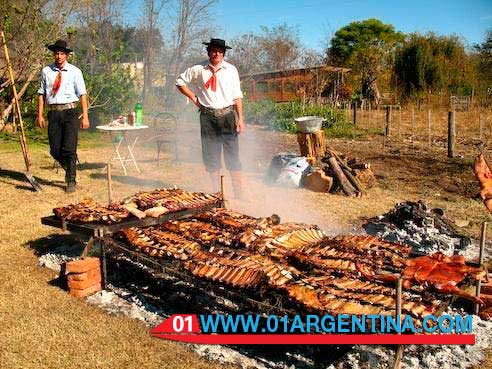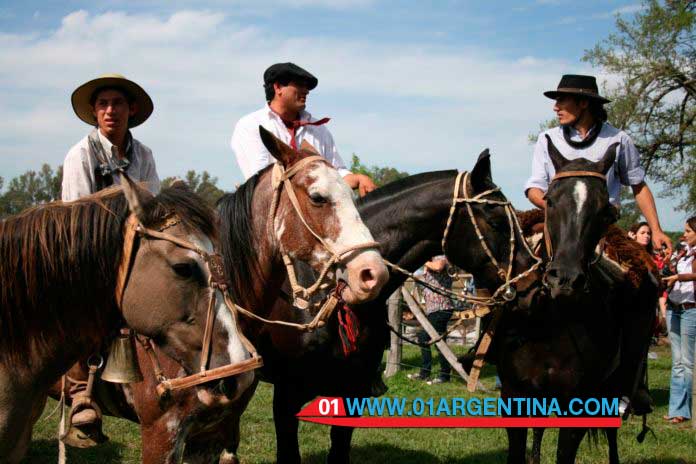
The origin of the gaucho dates back to 1600, when the plains on both banks of the Río de la Plata were full of wild cattle, the Estancias make up field extensions of between 1,000 and 20,000 hectares. which are dedicated to livestock agricultural production, the Casco, as the main house of the farm is called, are elegant constructions that were mostly made during the prosperity period of the Argentine countryside, from the end of the 19th century to the middle of the 20th century.
If you visit Buenos Aires do not miss the gaucho party that commemorates the gaucho culture and its traditions, visit an authentic stay in the Pampa Argentina. Do not miss an afternoon of nature, culture and relaxation in the countryside.
From these fields, which have a high productive quality, came the food that was exported to Europe during the shortage that afflicted it due to the military conflicts in which it was involved.
At that time the gaucho was the vagabond inhabitant of the pampas, who traveled aimlessly on his horse, with boleros, poncho, bow, yerba mate knife, salt, tobacco, as the only luggage, and sometimes accompanied by a woman.
The gaucho of each region of the country has its own characteristics and uses a different outfit that adapts to the needs and inclemencies of each geography
The trade in hides and meat of cimarron (wild) cattle, highly prized by European and Portuguese merchants in Brazil, generated the source of livelihood for the countrymen – Creoles, mestizos and mulattos – who lived freely in the pampas, without fixed employment, hunting and cooking these animals.
In addition, the gauchos had to compete with the Indians, who also engaged in the leather business.
The gaucho’s meals are: the roast, grilled meat that was often cooked with leather, empanadas, the locro, the humita, the arrope, the stew with character. Never missing the mate and, if it is with fried cakes, the better. Argentine cuisine and typical dishes.
Today it is the bar or warehouse of the town, but formerly the meeting place was the grocery store, they were taverns with the barred counter to avoid damages and losses in case of confrontations, which were motivated by debts, women or grudges generated by the excess of gin .
They entertain themselves with the taba (gambling game where the cow bone is thrown), the duck, the quad races, the ring, the riders and the cards.
They entertain themselves with the taba (gambling game where the cow bone is thrown), the duck, the quad races, the ring, the riders and the cards.
The gaucho that walks with his guitar is never missing. Sing or recite some songs that, when another musician or payador joins, became a payada, a poetic bid where, with wit and talent in the verse, he tells his experiences and feelings with humor or pain. The collection of gaucho poetry is very extensive.
Gaucho music: Malambo, milongas, zambas, chacareras, vidalitas, chamamés, cats, cuecas, chamarritas. In addition to the payada recited alone or in counterpoint with other payers. It is one of the foundations of our folk music.
The gaucho was marginal, but he was still seen with great respect, for being free, hard, for his extraordinary skill as a rider and being skilled with his hands, for his solidarity and ingenuity. From this admiration came Gaucho poetry, its writers used the gaucho language, their sayings and their ideas.
The romantic figure of the gaucho, as an independent and rude man, but loyal and wise was emblematic for authors such as José Hernández who wrote the “Martín Fierro”, where the gaucho takes on a hero dimension, or for Ricardo Güiraldes, who in “Don Segundo Sombra “he narrates his experiences with these countrymen in the town of San Antonio de Areco.
These stories, like so many others have made the gaucho a mythical character, which over time was transformed into an archetype of the “essential values of being Argentine.” Today the gaucho lives austerely but comfortably (it is also seen walking in 4×4) in contact with nature, preserving both its rural customs, its traditions as well as its environment.
Each room, many adapted to receive rural tourism, has its particularity that differentiates it from the others, both because of the landscape environment in which they are located, the nature of the productive exploitation of the countryside, and the complementary activities they offer.
The traditional country houses, have spacious and comfortable environments, organized by the spacious kitchen-stove, a large dining room, rooms with private or shared bathroom, living rooms, library or reading corner, game room, pool and barbecue.
In winter, although the environments enjoy heating, it is tradition to turn on the home and enjoy reading a good book or looking through the windows, starry nights or the vastness of sunrises and sunsets in the countryside.
The architecture of the imposing stay helmets varies according to the origin of their owners and the time of their construction. There are similar to Norman castles, French, English, American colonial and even Creole, but they always stand out for the quality of their materials, usually brought especially from Europe, and for the spaciousness and comfort of their environments.
The most significant for the tourist is the degree of cordiality and friendship that is established between them and the homeowners.
The hosts are country people, gauchos, simple and industrious people who put passion to the land to see it produce in seeds and cattle.
Contact us for Argentina Tours information.




